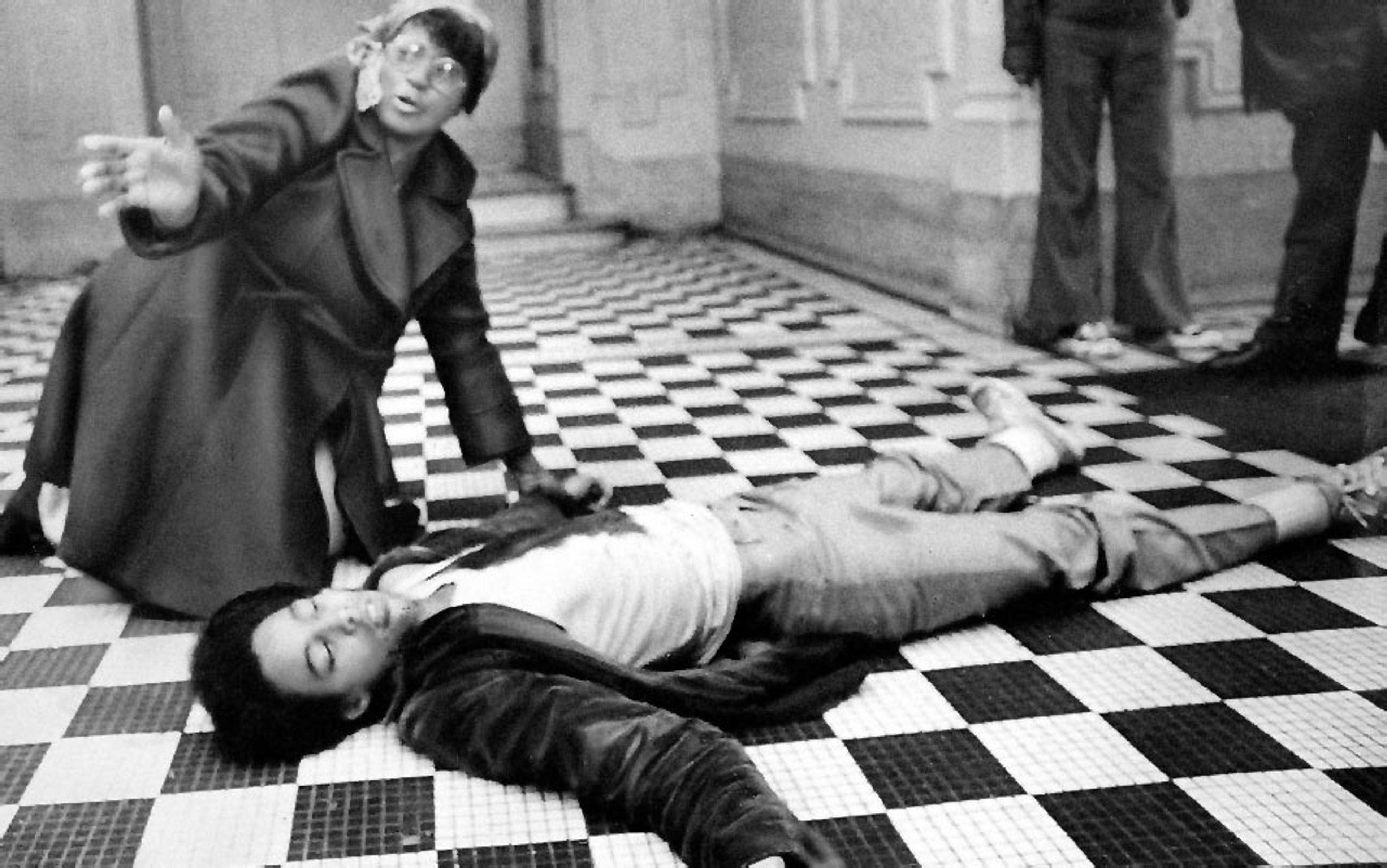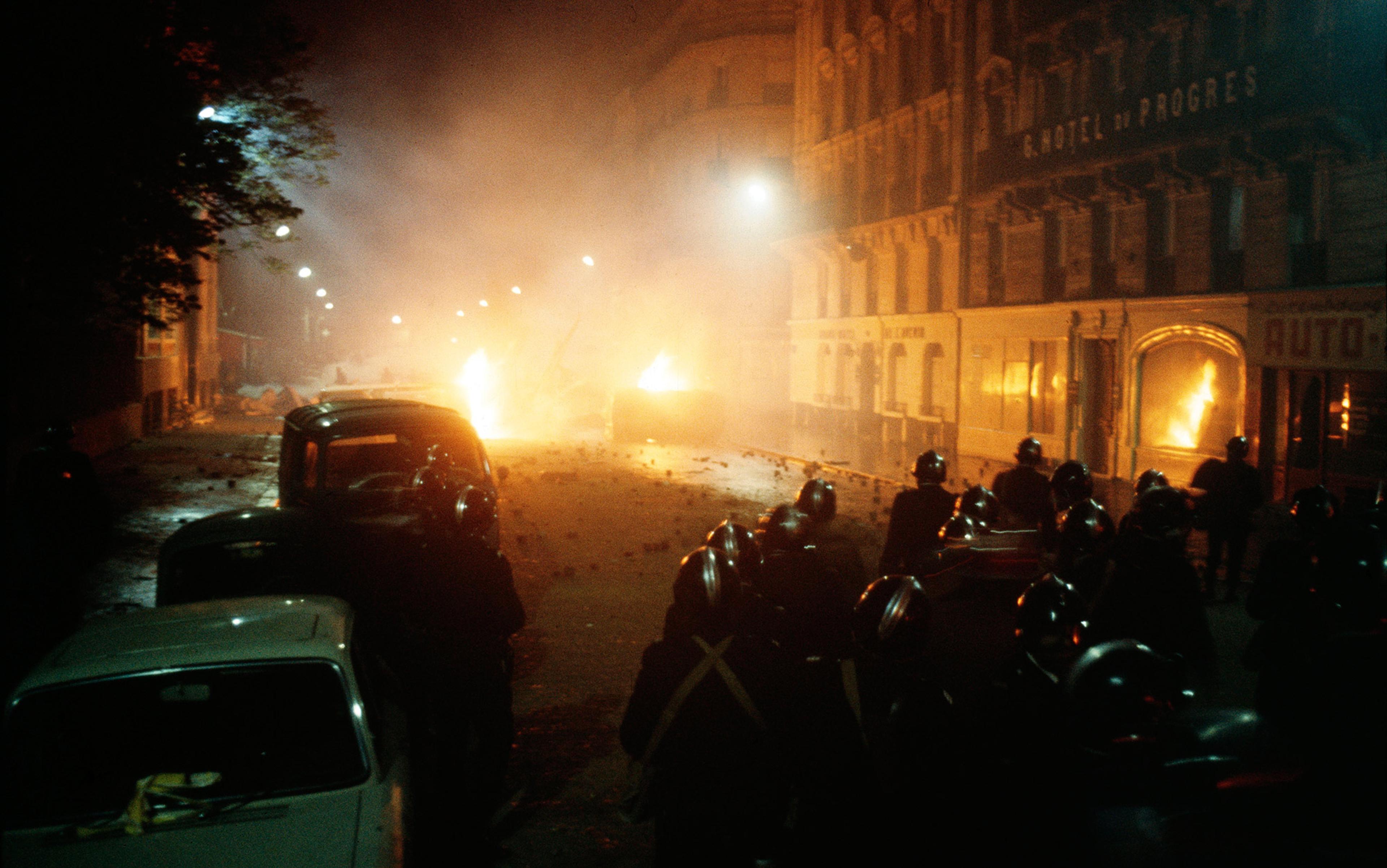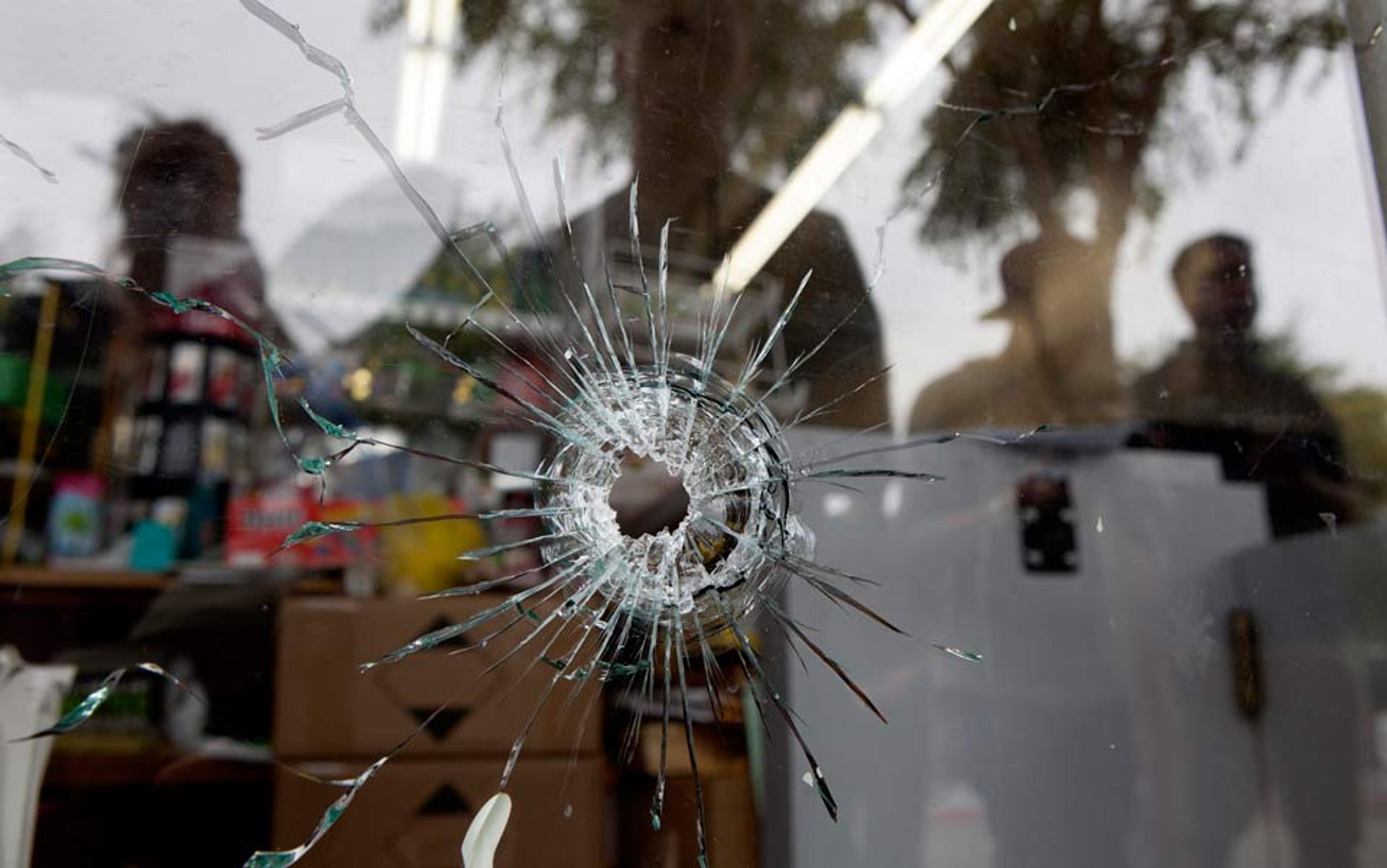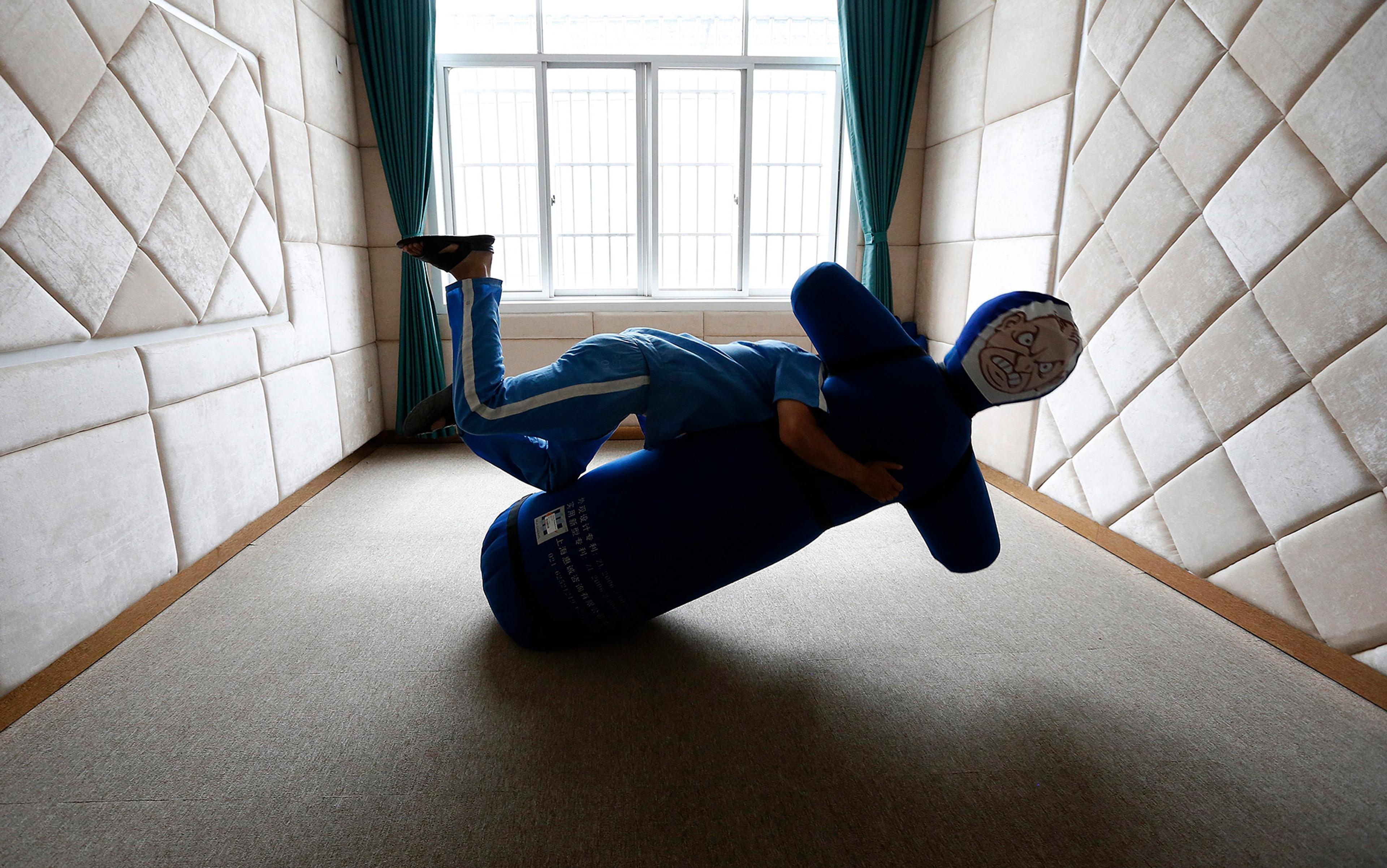A few years ago, I was assaulted on a busy street in London by a man who came up behind me. Some details of the assault are hazy, others pin-sharp. I recall exactly what my attacker did, and that the assault was witnessed by rush-hour drivers sitting at a red light. If there were pedestrians nearby, I do not remember them, though the situation suggests that there were people at hand. I do remember that no one came to my aid.
On the face of it, this looks like a textbook case of bystander apathy – the failure of onlookers to intervene in troubling, violent or even murderous events when others are present. The effect was first described in 1968 by the social psychologists Bibb Latané at Columbia University in New York and John Darley at New York University. Their research was prompted by the murder of Kitty Genovese outside her home in Queens in 1964. In The New York Times’s report of the killing, which was rehashed by news media across the world, only one of 38 witnesses was said to have done anything to intervene.
Latané and Darley’s research suggested that the greater the number of onlookers the less likely anyone was to step in, especially if others around them appeared calm or unconcerned. Whereas lone bystanders stepped forward to help a victim 85 per cent of the time, only 31 per cent of witnesses intervened when they were part of a group of five. Latané and Darley labelled this phenomenon ‘diffusion of responsibility’, which along with ‘evaluation apprehension’ (concern about how any intervention might be interpreted) and ‘pluralistic ignorance’ (if everyone else seems calm, there’s nothing to worry about) make up what has become known as the bystander effect or bystander apathy.
In the half-century since it was first described, the bystander effect has been widely studied and elaborated upon, but never fundamentally challenged. It appears in sociology, criminology and psychology textbooks, and in the media as a truism, something essential that, post Kitty Genovese, we now know about ourselves as humans. Generally speaking, the ‘condition’ comes freighted with moral meaning, seeming to confirm that when in groups we are lazier, lacking in empathy and less moral than when operating as individuals.
While this squares with my own experience, something about the bystander effect still sits uneasily with me. The use of social-science experiments to serve political or moral ends has a lurid and unsavoury history, and begs for a more skeptical examination of the experiments themselves. I decided to dig a little deeper. Setting aside the logistical and ethical difficulties of conducting experiments that involve witnessing violent events, much of the early research following Latané and Darley’s paper adopts the same psychosocial framework, ignoring that the behaviour of individuals within groups depends, at least in part, on the personalities of those individuals and the contingencies of their situation. Intuitively, it seems obvious that someone rushing to catch a train is less likely to intervene than someone with time on their hands; or that an adult accompanying children might be more reluctant to step in to stop a violent act than one who is alone; or that a man is more likely to intervene physically than a woman, if the perpetrator is also a man.
More recent studies suggest that bystanders do (or do not) intervene for reasons far more complex and individuated than Latané and Darley’s psychosocial model allows. In fact, the newest research calls that model into question entirely, suggesting that the way our brains process a violent event in the immediate instant, when intervention is most likely, is largely reflexive and unconscious. When it comes to witnessing violence, bystanders are in general more likely to intervene once cognition overrides reflexes, whether or not they are in groups. Understanding bystander responses this way challenges the idea that our moral compasses turn sketchy when we can offload responsibility for the Good Samaritan stuff onto somebody else; plus, when it comes to matters of survival, it suggests that some kind of group solidarity or species-wide empathy comes into play. Instead of characterising us as shirkers, willing to let others step up, this model argues that, when someone else’s survival might be at stake, we tend to do the right thing – and when we don’t, it could be the result of neurological processes beyond our immediate control. The implications for social psychology, ethics, the law and policy could be profound.
As it happens, the original Times report was what we might now call ‘fake news’. Editors at the paper knew the coverage was full of inaccuracies. The number of witnesses was not 38, but more likely six, two of whom called the police. Others heard sounds but interpreted them as a domestic dispute or street disturbance. One of Genovese’s neighbours, a 70-year-old woman, had called an ambulance and at considerable potential cost to herself cradled the wounded Genovese in the hallway of their apartment building until help arrived. But the Times ignored these facts in service of a story that played better to the race politics of the time (Genovese was white, her attacker black). Not until 2016 did the paper publicly acknowledge that its reporting had been ‘inaccurate’.
In 1969, a year after Latané and Darley’s original research, the social psychologists Jane and Irving Piliavin at the University of Pennsylvania, with Judith Rodin at Columbia, wrote their own study on the factors that influence helping behaviour. They concluded that bystanders were more likely to intervene if the victim is in close proximity and appeared vulnerable, but less likely if they seemed partially culpable for what was happening: if, for example, they were drunk. This study also found that the more empathy a bystander felt for a victim the more likely they would intervene – a finding confirmed in 1991 by research from the University of Marburg in Germany, and in 2008 by a study from the social psychologist Mark Levine at the University of Exeter in the UK and Simon Crowther, a clinical psychologist with the NHS. Both studies indicate that bystanders who score higher on levels of empathy and lower on ego are more likely to step in than cold-hearted narcissists. And interestingly, both the 1969 and 2008 studies found that, in direct contrast to Latané and Darley, bystanders were not less likely to intervene in the presence of others.
It’s likely that a complex set of assessments – some conscious, others not – take place in an onlooker’s mind. A bystander who appears to be not doing anything might well have made the rational call that someone else on the scene – with medical knowledge, say – would be better equipped to intervene. Or a bystander might become actively engaged in other ways, keeping passersby away, or simply being ‘on call’ or providing moral support. Yet few studies appear to take into account that failing to help the victim actively might constitute an intervention in itself.
The first reaction of a witness to an emergency is reflexive, not reflective or cognitive
In 2014, a striking new study by the Dutch neuroscientists Ruud Hortensius and Beatrice de Gelder at Tilburg University challenged Latané and Darley and the near-universal consensus prompted by their work. Latané and Darley had suggested that bystanders’ mental processes – their attention, evaluation and assessment of responsibility and competence – are dominated by the situation, and therefore largely independent of both physiological reflexes and individual personality.
Hortensius and de Gelder took a completely non-situational view of the bystander issue. Using fMRI, they registered brain function in experimental subjects made to watch a woman collapse and found increased activity in the regions of the brain associated with vision and attention, but not with mentalising (or ‘mind-mindfulness’), which describes the ability to see others as having their own thinking and feeling states. This suggests that the first reaction of any witness to an emergency is reflexive, rather than reflective or cognitive. In other words, in the presence of distressing or violent events, bystanders are likely to be in fight-flight-freeze (3F) mode. Only later do feelings of sympathy or empathy arise that, in turn, lead to reflection and the conscious decision-making process of whether or not to help. The distinction is critical, since reactive reflexes prevent us from intervening, whereas reflective ones make helping behaviour more likely.
Hortensius and de Gelder’s breakthrough shows that, at least initially, there is no conscious decision not to intervene. Significantly, their work also indicates that the presence of others increases both the 3F response and personal distress levels, indicating that trauma is amplified if experienced in a group. According to a number of other studies, people who experience high levels of personal distress at witnessing a violent or emergency event are more likely to have avoidant or inhibited personalities; these characteristics, augmented by greater reflexive distress, make them less likely to intervene. How much of these opposing forces exist in each bystander depends on who they are as people.
A few years after my attack, I heard shouting outside my flat in London. It was school turning-out time, and children and a few adults milled on the street, but my eye was drawn to a young man running away from two men and a dog. The men giving chase were armed with an axe and a large hunting knife. I stood for what seemed like a long time trying to absorb the scene. As my adrenaline levels spiked, I went into a momentary dissociative state during which I told myself, against all the evidence, that what was happening was a movie shoot. All this took just a few seconds, but it seemed I had no way of skipping to a more rational state. It was only afterwards that I was able to dial the emergency services.
I continued to watch as first the dog then the men caught up with the victim, but I didn’t leave my flat and get involved. The perpetrators and the victim clearly knew one another: they seemed to be in some kind of gang. I was afraid of the consequences of physically intervening but also sensed it would be unlikely to make a difference. Was I an inert bystander or someone who made an intervention? The awkward truth is I was both.
Violence is its own category, fundamentally different from any other kind of emergency or misfortune. Each violent act is highly individuated, yet all acts of violence bring with them a chaotic energy in which actions and thoughts become scrambled. Anyone who’s witnessed an attack will attest that there is something unmistakeable about the energy such violence generates: as if a tornado has swept up attacker, victim and witnesses in the same inescapable swirl. Amid such tumult, our ingrained, habitual ways of understanding and processing events can fall away in an instant. Witnesses to violence often describe themselves as having been dumbstruck or frozen to the spot. Others find themselves engaging in retaliatory or interventionist behaviour that, with hindsight, can seem shocking, and uncharacteristic – wildly heroic or recklessly stupid. The newest research suggests that none of these responses is necessarily conscious, so especially with violent events, it seems misplaced to apportion moral virtue or opprobrium to any bystander’s action or inaction.
Just because I don’t recall any pedestrians helping me, does that mean they didn’t?
Researchers will always struggle to replicate these dynamic and highly individuated events in a controlled setting, and so drawing conclusions about bystander behaviour in the face of violence might seem, at best, courageous, but there is research to suggest that, far from backing off, witnesses to violent events are more likely to intervene, even in the presence of other bystanders. This directly contradicts Latané and Darley.
In the face of such compelling critiques of the bystander effect, we need to reassess what we think we know. In the process of writing this article, I have had to review and reflect on what I thought happened to me on that busy street years ago. Looking back, I realise that I might have missed crucial details about my attack, even misinterpreted some of what I recalled. I am now certain there were car horns blaring, as if the drivers stuck in traffic were attempting to frighten off my attacker. Just because I don’t recall any pedestrians helping me, does that mean they didn’t? The attack was momentary, ending when the attacker ran off. But could he have been chased away by a bystander? When I thought that no one came to my aid, I didn’t factor in that I’d (reflexively) run after my attacker and so put myself out of help’s way. To bystanders watching me give chase, I must have looked quite capable of helping myself.
The recent development of portable brain scanners at Nottingham University and University College London should make it easier to study such violent incidents in the field. Until then, we remain dependent either on staged, nonviolent events in which the bystander effect appears to work differently, or on recollections of those involved in real violence, which (as in my own case) might be radically compromised by the experience of the event itself.
Though my experiences both as victim and as bystander might class me as an unreliable witness, they’ve also shaped me into a more proactive interventionist. Not long after the bomb attacks on London in July 2005, I was on the Tube when a young man fled suddenly at a stop, leaving his rucksack beside me. After the initial reflexive surge of anxiety, I rose to pull the emergency cord. When some passengers complained that I’d make them late for work, I picked up the rucksack (recklessly, I now realise), jumped off at the next stop and called for help on the platform. It was not a hero move, but neither was it purely reflexive. Rather, it was a learned response. Indeed, research in 1970 by the US psychologists Elizabeth and Manus Midlarksy suggests that previous experience of crime and of intervening increases helping competence, and helping behaviour. But we still know so little about these interveners because so much of the research concerns those who stand by passively.
No research is likely to pinpoint definitively how many violent or emergency incidents are prevented by bystander intervention, but a recent study commissioned by the British Transport Police, Network Rail and the suicide-prevention charity the Samaritans for their campaign ‘Small Talk Saves Lives’ shows that six life-saving interventions were made for every completed or suspected suicide on the UK rail network in 2016-17. One in 10 of those interventions was made by a bystander, the others by rail staff and police. And we might be becoming more interventionist. According to these figures, January to September 2018 saw a 20 per cent rise in interventions by the public on the UK’s rail network.
There is something else about bystanding that is largely absent from the research, but I think is important: the assumption that a bystander who consciously chooses or otherwise fails to intervene risks neither the humiliation of their help being rejected nor any possible physical peril. This is a gross simplification, as anyone who has stood by will tell you. Not long after I was assaulted, I came across a group of neighbourhood kids, some of whom I knew. The eldest boy was verbally bullying his younger companion into giving up his scooter. I was in a hurry that day, and didn’t intervene. By failing to step in, did I affirm the bully’s sense that he could act with impunity? Did I set up the victim for a lifetime of impotent rage? Or worse, did I inadvertently help to create another tormentor? I am haunted by these questions, and by others that my inaction raises about me too. If the price of intervention is possible humiliation or physical peril, I can attest to the fact that the price of doing nothing is shame and moral harm. Intervention might rob us of our lives, but doing nothing is the thief of our souls.
People do intervene when they see something terrible happening. Everyday heroes abound
Instead of handwringing and (wrongly) ascribing moral opprobrium to those who do not intervene, perhaps our time would be better spent investigating why some people do step up, particularly in violent situations in which the price of intervention could be very high. How might we encourage others to be more like them?
Training is one answer. Via a programme called ‘Managing Suicidal Contacts’, the Samaritans have taught 18,000 rail staff and British Transport Police in suicide-prevention techniques, which include how best to approach people who seem distressed or vulnerable. Over the past 15 months, more than 80 interventions have been made on the railway by Samaritans-trained staff. We cannot know how that translates into lives saved, but it is reasonable to assume it does. Buoyed by its success, the Samaritans has extended the programme to staff in front-line positions, such as security guards and retail workers.
In the US in 2014, the Obama administration’s White House Task Force to Protect Students from Sexual Assault led to programmes such as ‘Bringing in the Bystander’ and ‘Green Dot’ that teach individuals when and how best to respond to campus-based sexual violence. Anecdotal evidence suggests that these initiatives are making a difference in intervention rates. In fact, ‘Green Dot’ is being trialled elsewhere, including at the University of Western England in the UK.
For half a century, we have erred in assuming that a group of people who together witness an act of violence become more risk-averse, passive and more inclined to worry about how they’ll be perceived compared with those who act purely as individuals. While it’s true that some people are more likely to intervene than others, and that bystanders are more minded to step in if they view the victim as particularly deserving or vulnerable, people do intervene when they see something terrible happening. And they do so whether or not they are by themselves, and often at considerable personal risk. Everyday heroes abound: 55 years on from Kitty Genovese’s tragic murder, the pressing and unanswered question is not why bystanders were unwilling to come to her aid, but why we, the public, remain so willing to believe they did not.






